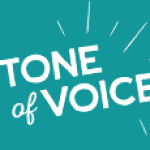 “Don’t use that tone with me, Alyson June!” My Mother always included my middle name when
“Don’t use that tone with me, Alyson June!” My Mother always included my middle name when
she was mad at me. Which she was often since I was quite huffy when I was a teenager!
What is tone? In music it refers to the pitch, quality and strength of a note.
In speaking, it means character, mood or feel of the word. It expresses emotion.
You can change your meaning through tone. It’s not the things you say, it’s how you say them
and how those words make people feel that enriches the meaning.
Setting your tone helps to connect you with the audience. A warm, friendly tone builds trust and
a relationship. A harsh tone sets the audience on edge and may even make them angry.
A confident and enthusiastic tone can inspire the audience, while a dull and monotone tone can
bore, alienate and maybe give the audience the excuse to catch a few winks or look at their
phone!
Here’s an exercise that can help. It’s best if you can record your voice to see if you have changed
the tone:
Practice speaking the following sentences in different tones. First say them in a firm, harsh tone,
and then in a lighter, friendlier tone:
“Thank you for taking the time to speak with me today.”
“Are there any concerns with our product?”
“That’s very nice of you to say.”
Match the tone with your topic:
Sometimes speakers smile out of nervousness when presenting. If you’re talking about a serious
subject like the number of vehicle accidents in your community, try not to smile. It looks like
you’re making light of the subject.
I love this quote by writer, Maya Angelou
“I’ve learned that people will forget what you said, people will forget what you did, but people
will never forget how you made them feel.”
